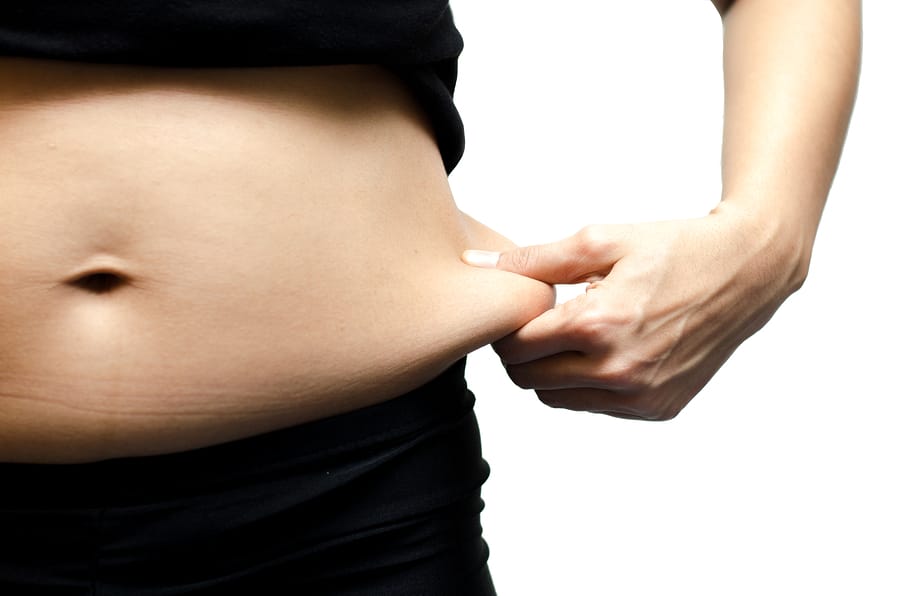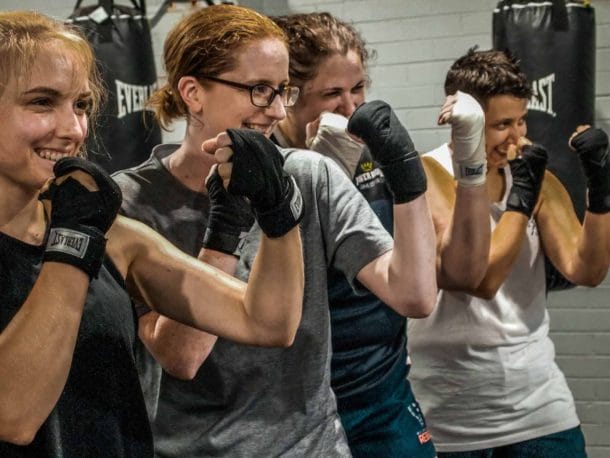To help you out, we have summarized some training myths which you should stop believing in.

Myth #1: Strength training makes females bulky.
The theory
Strength training makes you gain more muscle and looks bulky.
Reality
Because of the low testosterone, it is difficult for women to get significant changes from strength training compared to men.
Instead, strength exercises can help you lose weight better.
Because of density, muscles take up less space on your body than fat. Under the same weight, people with more muscle will look more curved and slimmer.

Myth #2: Muscle soreness means you have a good workout.
The theory
Soreness from muscle indicates a good exercise of muscle.
Reality
Fitness people are always wondering if they do a good and efficient workout or not and some of them will define it by using the soreness level of muscle.
BUT, this is not correct.
During fitness, there is one type of soreness which is normal. The delayed onset muscle soreness (DOMS) for beginners. Since their muscles are not used to exercises, after the first time training, it is normal to feel soreness. But the soreness of the pain will decrease over time and should not occur after the body has adapted to the intensity of the training.
If your body still feels sore after training, there are two possibilities for a high probability. One is that your training intensity is too high, not suitable for continued use at this stage; the second is that your stretching exercise after training is not done or enough.
In all, you need to adjust your training to your personal condition and with targeted stretching exercises.

Myth #3: Cardio is the best way to lose weight.
The theory
Cardio is for losing weight to get lean and strength training is for gaining muscle, so in order to lose weight, you should only do cardio exercises
Reality
Doing cardio is one way to lose weight but only doing cardio is not the best way.
For fitness people whose main purpose is to lose weight, long-term, high-intensity aerobic training may help you achieve your goals, but this is not the best option.
In the long run, the best way is to improve your body composition and make your body difficult to accumulate fat.
Strength training can help you do it!
When your body has more lean muscles through strength training, you will have more muscle groups to help you burn calories while you are exercising; in rest, your body will automatically consume more energy to maintain muscle groups. .
Therefore, the right combination of aerobic training and strength training, combined with a balanced diet plan is the best choice.
“Muscle is metabolically active.”
Adam Rosante, C.S.C.S., author of The 30-Second Body.

Myth #4: You can spot certain body part to lose fat.
The theory
You can choose certain body parts, such as abs, hip and arms, to lose fat.
Reality
Spotting your fat is not real.
Fat cells distribute every part of your body. Reducing overall body fat through persistent calorie deficiency is the only way to reduce localized fat.

Myth #5: Sweating more to make a good workout.
The theory
Sweating means burning fat effectively. More sweating indicates better workout.
Reality
The body’s sweating system is the “air conditioning” in our body. The main function is to regulate the body temperature.
During exercise, our body will maintain temperature and dissipate heat by sweating as the core temperature rises.
If your goal is to lose weight, a lot of sweating means more loss of water in the body, rather than a lot of fat burning. Your body may lose weight briefly after the end of exercise, but when you add enough water, the weight will return.

Myth #6: Females should choose lighter weight with higher reps.
The theory
Heavy weights is for males, lighter weights can prevent females from being manly.
Reality
Many people think that higher reps with lighter weight exercises can consume more fat and “tone” your muscle for not being manly.
In fact, the key to losing fat is that the calories you eat are lower than the calories burned. Exercise is a way to help consume fat outside the diet and the increase in muscle is also for consuming more fat.
In order to stimulate the muscles better, you should choose to use a variety range of weights with flexible reps based on your own fitness condition and increase over time.

Myth #7: Muscle turns into fat if you stop training.
The theory
You should keep training to maintain your muscle, otherwise it will turn into fat in your body.
Reality
Your muscles don’t turn into fat, it just shrinks.
Muscle and fat are two completely different organic compounds. The idea that muscles turn into fat is as unrealistic as saying that metal will turn into glass.
There are many people who gain weight after stopping exercise, but this is not because their muscles have turned into fat. If their diet does not change and they no longer consume extra calories via exercising, there will be extra calories which will accumulate fat in the body.

Myth #8: Squatting is bad for knees.
The theory
Squats put extra pressure on the knees.
Reality
Squats will not put pressure on the knees, and the wrong squats will.
The key to squatting against stress on your knees is during the process, don’t let your knees go beyond your toes.
It may be difficult to keep your knees and toes consistent when you just start squatting. You can choose to do some modified squats, such as doing with some instruments (kettlebell) and then slowly try to do standard ones.

Myth #9: Cardio exercise works after 20mins.
The theory
Every time you do cardio exercise, do it over 20 minutes to make it worth it and effective.
Reality
As long as you are exercising, you are consuming fat.
The only difference is the rate of fat consumption. At the very beginning of your exercise, 10 to 15 minutes, the fat consumption rate is low. After 15 to 20 minutes, the fat consumption rate will increase.
So for aerobic exercise, we recommend that you do more than 30 minutes for maximum effect, but this does not mean that 20 minutes of exercise is meaningless.

Myth #10: You should not hold your breath during lifting.
The theory
The body’s internal circulation of oxygen is very important for exercise.
Reality
Holding your breath is risky for some people with high blood pressure or cardiovascular disease. For those who do not have such diseases, as long as they are properly operated, it will be a good help for your strength training.
In strength training, holding in breath after breathing enough oxygen can increase chest pressure, open your core muscles, and improve your fitness.
The following are the basic principles of holding your breath in strength training:
- Inhale before each rep;
- Hold your breath during the most difficult part;
- Exhale slowly after the end.
Conclusion
In short, for any sport, don’t rely on a single one and don’t fully negate another.
Training myths won’t stop showing, don’t waste time on the wrong way of doing fitness.
When you are confused or uncertain, ask your personal trainer or the professionals you believe in.
Happy training 🙂



